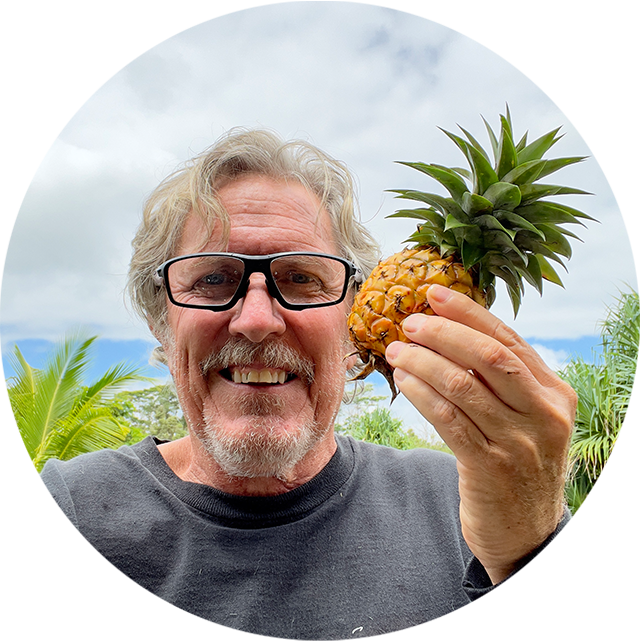“Suddenly, I could hear sounds I hadn’t experienced in nearly two decades. Conversations with loved ones became natural again. And slowly, I rediscovered music.”
Going Bilateral: The Joy of My Second Cochlear Implant
Bob had been progressively losing his hearing for about 30 years. He was fitted with top-of-the-line hearing aids and one cochlear implant (CI), but it wasn’t until his second Advanced Bionics cochlear implant that his life really changed. This is his story:
My Progressive Hearing Loss and a Journey Back to Sound
About 15 years ago, I woke up to a world that sounded… different. Not silent, but distorted—like my brain could no longer process what my wife or anyone else was saying to me. Conversations felt like an indecipherable blur.
As a former U.S. Army Sergeant and a hardware engineer for multi-national technology companies in Silicon Valley, I was used to working in collaborative and boundary-pushing environments. Without hearing well, I lost the ability to excel in my jobs. While my company made sincere efforts to accommodate my hearing loss, at the time, technology was limited. This was pre-Zoom, and conference calls made up a significant part of my role. Eventually, I was placed on disability.
Faced with the abrupt change of pace, I quickly realized that boredom was my biggest challenge. To fill the void, I turned to abstract expressionist painting — a creative and physical outlet that allowed me to channel my energy and emotions. Still, I sought answers to my hearing loss and hoped I could return to a hearing life I knew.
“Have you considered getting a cochlear implant?”

The first audiologist I saw ruled out an infection but had no real answers. A second doctor suspected Ménière's disease. He tried several treatments, but nothing worked. Eventually, he made a recommendation that stopped me in my tracks: a cochlear implant.
Wait… what?
Living on a remote island in the Pacific, I had never seen anyone with an implant, let alone met someone who had one. I dove into research, reading every medical article I could find. Months passed as I wrestled with doubt and fear. But in the end, I made the decision—one ear first.
My First Cochlear Implant: A Frustrating Start
Excitement grew as "activation day" arrived. But when the audiologist turned on the CI, nothing happened. The headpiece couldn’t connect to the implanted induction coil. Frustration. Disbelief. After several visits, it finally paired—but the results were underwhelming. The sounds were tiny, distant, and foreign. Speech comprehension was terrible. Had I picked the wrong ear? Doubt crept in, but I pressed on.
Over time, my brain adapted. One-on-one conversations became manageable. Some voices, though, remained unintelligible. Music, once a source of joy, was reduced to a handful of songs deeply embedded in my memory. It was progress, but far from perfect.
My Second Cochlear Implant: A Game-Changer
Frustrated by the lack of progress, I decided to go bilateral. At 65, I finally asked my doctor: am I still a candidate for a second implant? His answer was immediate—of course.
Finally, I didn’t hesitate. Surgery and recovery were easy. Activation day arrived, and I approached it with cautious optimism. My audiologist scheduled a full two-hour session—a welcome change from my first experience.
And then, something amazing happened.
The moment it turned on, without any fine-tuning, I could hear more clearly than I ever had with the first implant. The difference was night and day. It was like going from a distant AM station to FM.
Hearing rehabilitation was a breeze. There was a synergy between the two implants that accelerated my progress in ways I never expected.
In many situations, my current Advanced Bionics Naída CI Marvel processors are the equivalent of a high-fidelity audio system. Suddenly, I could hear sounds I hadn’t experienced in nearly two decades. Conversations with loved ones became natural again. And slowly, I rediscovered music.
Music: The Missing Piece
Music had always been deeply personal to me—a source of joy, comfort, and therapy. Losing it was one of the hardest parts of my hearing decline. But with two implants, I could finally enjoy it again. My library expanded, and songs I thought I’d never hear properly again filled my ears, bringing back emotions and memories I thought were lost forever.
No Regrets
Receiving my first cochlear implant brought some improvement, though it wasn’t quite what I had hoped for. A decade later, the second implant was a game changer, offering a remarkable synergy that significantly enhanced my quality of life.
Going bilateral was one of the best decisions of my life. It gave me back something I hadn’t realized I was missing: connection. To people. To music. To the world around me.
Now officially retired, I’m happy to continue to connect to the sounds around me, while staying engaged, expressive, and connected to the world through art.
If you're considering a cochlear implant—or a second one—know this: the journey isn't always easy, but the rewards can be life-changing.

Note: The views expressed in this post are those of the author. Each person's situation is unique so your experience may not be the same. Talk to your hearing care provider about whether a cochlear implant is right for you.
